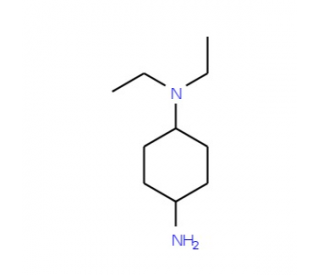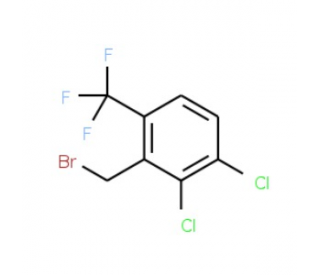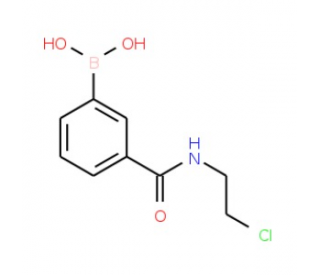詳細說明
Purity
>95%, by SDS-PAGE under reducing conditions and visualized by silver stain
Endotoxin Level
<0.01 EU per 1 μg of the protein by the LAL method.
Activity
Measured in a serum-free cell proliferation assay using MCF?7 human breast cancer cells. Karey, K.P. et al. (1988) Cancer Research 48:4083. The ED 50 for this effect is 20?100 ng/mL.
Source
Mouse myeloma cell line, NS0-derived Ser20-Lys241, with a C-terminal 6-His tag
Accession #
N-terminal Sequence
AnalysisSer20
Predicted Molecular Mass
24.8 kDa
SDS-PAGE
40-43 kDa, reducing conditions
5898-NR |
| |
Formulation Lyophilized from a 0.2 μm filtered solution in PBS. | ||
Reconstitution Reconstitute at 100 μg/mL in PBS. | ||
Shipping The product is shipped at ambient temperature. Upon receipt, store it immediately at the temperature recommended below. | ||
Stability & Storage: Use a manual defrost freezer and avoid repeated freeze-thaw cycles.
|
Background: Neuregulin-1/NRG1
Neuregulin-1 (NRG1) belongs to a family of structurally related glycoproteins encoded by four distinct but related genes, Nrg1, Nrg2, Nrg3, and Nrg4. Through alternative splicing or the use of alternative promoters, Nrg1 encodes more than 14 soluble or transmembrane proteins. Type I NRG1 isoforms include Neu Differentiation Factor, Heregulin, and ARIA. These consist of an N-terminal domain, an Ig-like domain, a linker with a Ser/Thr rich region, an EGF-like domain, a transmembrane segment, and a cytoplasmic domain. Type II isoforms such as Glial Growth Factor have a larger N-terminal domain and lack the Ser/Thr rich linker. Type III isoforms such as Sensory and Motor neuron-Derived Factor lack the Ig-like domain but contain a cysteine rich domain (CRD) and a second transmembrane segment (1 - 5). The alpha and beta splice variants of NRG1 differ in their extracellular juxtamembrane regions (3, 6). This recombinant protein corresponds to the extracellular domain (ECD) of the type I alpha isoforms (Accession # Q7RTV8). NRG1 isoforms exhibit distinct expression patterns and functions (7). The EGF-like domain, which is common to all NRG1 isoforms, is required for Neuregulin binding to ErbB3 or ErbB4 receptors (3). ErbB3 or ErbB4 subsequently heterodimerize with ErbB2, resulting in tyrosine phosphorylation and NRG1 induced signaling (1, 2). Soluble growth factors can be released by TACE/ADAM17, BACE, or ADAM19 mediated shedding of the ECD of transmembrane NRG1 (8 - 10). The cytoplasmic region can be cleaved by gamma -secretase, generating a repressor that inhibits the transcription of proapoptotic genes (11). NRG1 regulates multiple nervous system functions including axon guidance, synapse formation and plasticity, glial cell development, and axon myelination (1, 2). In the heart, NRG1 regulates organ morphogenesis and contractility and also plays a cardioprotective role following tissue injury (12). Multiple polymorphisms and aberrant expression of NRG1 isoforms are associated with the development of schizophrenia and many cancers (1, 2, 13).
References:
Mei, L. and W.-C. Xiong (2008) Nat. Rev. Neurosci. 9:437.
Talmage, D.A. (2008) Novartis Found. Symp. 289:74.
Holmes, W.E. et al. (1992) Science 256:1205.
Marchionni, M.A. et al. (1993) Nature 362:312.
Ho, W.-H. et al. (1995) J. Biol. Chem. 270:14523.
Wen, D. et al. (1994) Mol. Cell. Biol. 14:1909.
Meyer, D. et al. (1997) Development 124:3575.
Hu, X. et al. (2006) Nat. Neurosci. 9:1520.
Willem, M. et al. (2006) Science 314:664.
Yokozeki, T. et al. (2007) Genes Cells 12:329.
Bao, J. et al. (2003) J. Cell Biol. 161:1133.
Lemmens, K. et al. (2007) Circulation 116:954.
Breleux, M. (2007) Cell. Mol. Life Sci. 64:2358.
Entrez Gene IDs:
3084 (Human); 211323 (Mouse); 112400 (Rat)
Alternate Names:
ARIA; GGF2; GGFglial growth factor; Heregulin-1; HGL; HGLneu differentiation factor; HRG; HRG1; HRG1-alpha; HRG1-beta 1; HRGAneuregulin 1 type IV beta 1a; MST131; MSTP131; NDFheregulin, alpha (45kD, ERBB2 p185-activator); neuregulin 1 type IV beta 3; neuregulin 1; Neuregulin1; Neuregulin-1; NRG1; pro-neuregulin-1, membrane-bound isoform; pro-NRG1; sensory and motor neuron derived factor; SMDF










 粵公網安備44196802000105號
粵公網安備44196802000105號